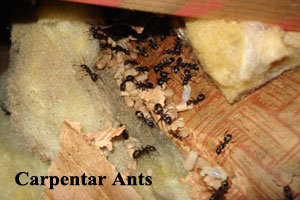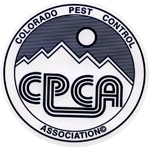Pest Library - Ants

Ants are social insects of the family Formicidae, and along with the related wasps and bees, they belong to the order Hymenoptera. Ants evolved from wasp-like ancestors in the mid-Cretaceous period between 110 and 130 million years ago and diversified after the rise of flowering plants. More than 12,500 species are classified and the upper estimates of species is about 22,000. They are easily identified by their elbowed antennae and a distinctive node-like structure that forms a slender waist.
Ants form colonies that range in size from a few dozen predatory individuals living in small natural cavities to highly organised colonies which may occupy large territories and consist of millions of individuals. These larger colonies consist mostly of sterile wingless females forming castes of "workers", "soldiers", or other specialised groups. Nearly all ant colonies also have some fertile males called "drones" and one or more fertile females called "queens". The colonies are sometimes described as superorganisms because the ants appear to operate as a unified entity, collectively working together to support the colony.
Ants have colonised almost every landmass on Earth. The only places lacking indigenous ants are Antarctica and certain remote or inhospitable islands. Ants thrive in most ecosystems, and may form 15-25% of the terrestrial animal biomass. Their success has been attributed to their social organisation and their ability to modify habitats, tap resources, and defend themselves. Their long co-evolution with other species has led to mimetic, commensal, parasitic, and mutualistic relationships. Ant societies have division of labour, communication between individuals, and an ability to solve complex problems. These parallels with human societies have long been an inspiration and subject of study.
Many human cultures make use of ants in cuisine, medication and rituals. Some species are valued in their role as biological pest control agents. However, their ability to exploit resources brings ants into conflict with humans, as they can damage crops and invade buildings. Some species, such as the red imported fire ant, are regarded as invasive species, since they have established themselves in new areas where they have been accidentally introduced.
Ants as Pests
Some ant species are considered pests, and because of the adaptive nature of ant colonies, eliminating the entire colony is nearly impossible. Pest management is therefore a matter of controlling local populations, instead of eliminating an entire colony, and most attempts at control are temporary solutions.
Ants classified as pests include the pavement ant, yellow crazy ant, sugar ants, the Pharaoh ant, carpenter ants, Argentine ant, odorous house ants, red imported fire ant and European fire ant. Populations are controlled using insecticide baits, either in granule or liquid formulations. Bait is gathered by the ants as food and brought back to the nest where the poison is inadvertently spread to other colony members through trophallaxis.
Boric acid and borax are often used as insecticides that are relatively safe for humans. Bait may be broadcast over a large area to control species like the red fire ant that occupy large areas. Nests of red fire ants may be destroyed by following the ants' trails back to the nest and then pouring boiling water into it to kill the queen. This works in about 60% of the mounds and requires about 14 litres (3 imp gal; 4 US gal) per mound.


